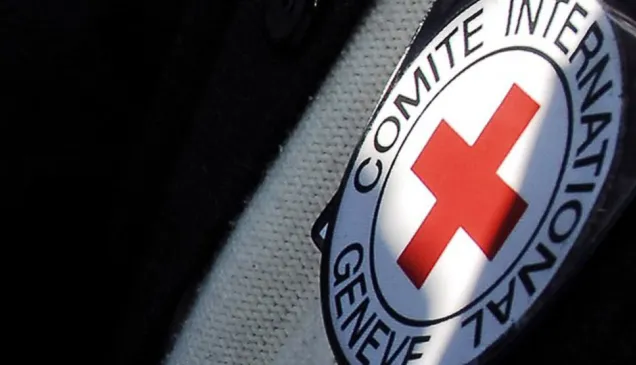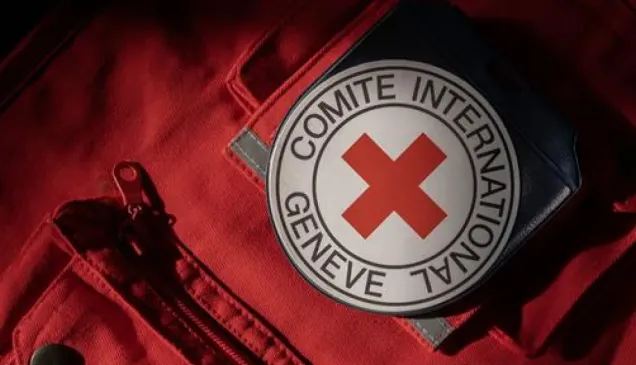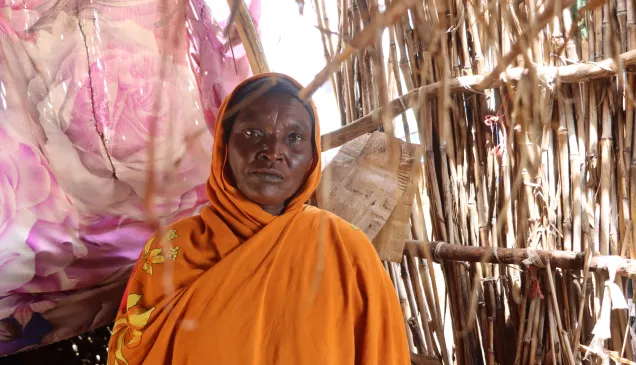Why does the Nuclear Ban Treaty matter?

On 22 January 2021, the Treaty on the Prohibition of Nuclear Weapons (TPNW) has entered into force as the first instrument of international humanitarian law to mitigate the catastrophic humanitarian consequences of using and testing nuclear weapons.
 This day is nothing short of a victory for humanity, one that campaigners have been working toward for decades and arguably one of the first good news of 2021. Magnus Lovøld, ICRC Policy Advisor on nuclear weapons, tells us why this treaty matters, what will change now it has entered into force and what comes next.
This day is nothing short of a victory for humanity, one that campaigners have been working toward for decades and arguably one of the first good news of 2021. Magnus Lovøld, ICRC Policy Advisor on nuclear weapons, tells us why this treaty matters, what will change now it has entered into force and what comes next.
1. Which countries have ratified the Nuclear Ban Treaty?
As of 22 January 2021, 51 countries across the world have ratified or acceded to the treaty:
Antigua and Barbuda, Austria, Bangladesh, Belize, Benin, Bolivia, Botswana, Cook Islands, Costa Rica, Cuba, Dominica, Ecuador, El Salvador, Fiji, Gambia, Guyana, Holy See, Honduras, Ireland, Jamaica, Kazakhstan, Kiribati, Lao People's Democratic Republic, Lesotho, Malaysia, Maldives, Malta, Mexico, Namibia, Nauru, New Zealand, Nicaragua, Nigeria, Niue, Palau, Palestine, Panama, Paraguay, Saint Kitts and Nevis, Saint Lucia, Saint Vincent and the Grenadines, Samoa, San Marino, South Africa, Thailand, Trinidad and Tobago, Tuvalu, Uruguay, Vanuatu, Venezuela, Viet Nam.
We banned the bomb!
A rare piece of good news in 2020: nuclear weapons are about to become illegal, after the 50th State ratified the #NuclearBan. pic.twitter.com/zFS7WYQ0Ua— ICRC (@ICRC) October 24, 2020
In addition, 37 States have signed the Treaty but not yet ratified it, and some 40 States have expressed support for the Treaty in the UN but so far neither signed nor ratified. The ICRC is working to encourage States to take steps towards ratifying or adhering to this Treaty. And our work will not be done until all States have joined this Treaty.
2. What does the nuclear ban treaty make illegal?
The entry into force of the nuclear ban treaty – or the Treaty on the Prohibition of Nuclear Weapons, as it is officially called – bans the use, threat of use, development, testing, production, manufacturing, acquisition, possession or stockpiling of nuclear weapons. It also makes it illegal to assist, encourage or induce anyone, in any way, to engage in any activity prohibited by the Treaty.
From 22 January 2021, the Treaty is legally binding for the 51 States that have ratified or acceded to it, and in the future will bind other States when they join it.
The Treaty is the first instrument of international law to help mitigate the catastrophic humanitarian consequences of using and testing nuclear weapons, notably by requiring states to help victims of nuclear testing and use and clearing contaminated areas. It formalizes into law a strong international understanding, by States and civil society alike, that any use of nuclear weapons, regardless of its rationale is unacceptable.
By explicitly and unequivocally prohibiting the use of nuclear weapons, the TPNW sends a powerful signal that such use would not only be unacceptable from a moral and humanitarian perspective, but also illegal under international humanitarian law (IHL).
3. Will the Nuclear Ban Treaty force nations to destroy their nuclear weapons?
Yes and no. The entry into force of the TPNW means that the treaty's provisions will be legally binding for the states that have ratified or acceded to it. States with nuclear weapons would either have to destroy their nuclear weapons before joining the Treaty, or commit to doing so according to a "legally binding, time-bound plan" that will eliminate their nuclear weapon programme in a verifiable and irreversible way.
However, for this to take effect, the nuclear weapons possessors will have to join the Treaty, which they have not yet done.
Join us and say no to nuclear weapons.
4. Now that the Treaty on the Prohibition of Nuclear Weapons has entered into force, what will concretely change? Would the nuclear threat be closer to zero?
There is already a strong international rejection of the potential use of nuclear weapons. This taboo has stigmatized nuclear weapons as unacceptable means of warfare, from a moral, humanitarian and now also a legal point of view. Partly because of this, nuclear weapons have not been used since the atomic bombings of Hiroshima and Nagasaki in 1945.
But as long as nuclear weapons exist, there is a risk that they may be used again, by accident, miscalculation or intent. And today, we see that the risk of use of nuclear weapons is growing.
Make no mistake: the entry into force of the TPNW is a momentous achievement and a significant victory, but it marks a new beginning — and not the end — of our efforts to strengthen the taboo against nuclear use. It would therefore be illusory to expect the TPNW to deliver a world without nuclear weapons tomorrow. Rather, the TPNW should be viewed as the humanitarian, moral and legal starting point of a long-term effort to achieve nuclear disarmament and non-proliferation. This is how international law works.
This said, the norms established by previous weapons prohibitions in the past have impacted the policies of governments, companies and banks in countries that had not joined such treaties. The prohibitions of the TPNW establish a clear standard—a benchmark against which all efforts towards a world without nuclear weapons will be judged.
5. None of the countries who possess nuclear weapons have signed the treaty: what does it mean for them?
The nuclear ban treaty strengthens the taboo against use of nuclear weapons. As such, the treaty increases the pressure on the nuclear-armed States to reduce and eliminate their nuclear arsenals, in line with their international commitments and obligations, notably those under the Nuclear Non-Proliferation Treaty (NPT).
The Treaty also gives actors advocating the prohibition and elimination of nuclear weapons a powerful tool of influence. Regardless of the time frame one believes is needed to achieve a world without nuclear weapons, an unambiguous norm establishing the illegality of such weapons will be needed.
6. What would happen to a nation who decides to launch a nuclear attack anyways?
Given the humanitarian catastrophe of unprecedented proportions that any use of nuclear weapons is likely to generate, a nuclear attack would be met with widespread international condemnation and horror.
Their devastating and unmanageable consequences are an important reason why nuclear weapons haven't been used in 75 years.
As concluded by the ICRC, their catastrophic humanitarian consequences render it extremely doubtful that nuclear weapons could ever be used in line with international humanitarian law. This is also the reason why we must act now to prevent a nuclear explosion from happening in the first place, by removing any use and testing of nuclear weapons from the realm of possibility.
The entry into force of the nuclear ban treaty is the beginning – not the end.
7. What are the main differences between the Non-Proliferation Treaty (NPT) and the Treaty on the Prohibition of Nuclear Weapons (TPNW)? What does the TPNW does that the NPT didn't?
By providing pathways for the elimination of nuclear weapons, the TPNW is a concrete step towards fulfilling the NPT's disarmament obligations. However, the NPT is generally seen as a 'grand bargain' in which the non-nuclear-weapon States forsake the option of developing nuclear weapons in exchange, among others, for a legal obligation on the part of the nuclear-weapon States to disarm and eventually eliminate nuclear weapons.
The TPNW, in contrast, prohibits nuclear weapons outright, comprehensively, for all States Parties, irrespective of whether they possess nuclear weapons when they join the Treaty.
Importantly, the TPNW also prohibits the use of nuclear weapons, while the NPT is focused on the transfer, manufacture and acquisition of these weapons.
8. Doesn't the TPNW undermine the Non-Proliferation Treaty (NPT)?
Far from undermining the NPT, the TPNW complements and supports the NPT's nuclear disarmament and non-proliferation objectives. Indeed, the TPNW's clear and comprehensive prohibition of nuclear weapons creates a further disincentive for the proliferation of nuclear weapons. It represents a concrete step towards implementing the NPT's Article VI obligation to pursue negotiations on effective measures for nuclear disarmament.
Concerns about safeguarding the Non-Proliferation Treaty as the cornerstone of nuclear disarmament efforts should focus on ensuring the full and effective implementation of its article VI obligations and, in particular, the disarmament and risk reduction commitments undertaken in the Action Plan of the 2010 NPT Review Conference.
9. What's next now in the fight against nuclear weapons?
The entry into force of the TPNW marks a new start in our efforts to achieve a world without nuclear weapons. We must now work, over the coming years and decades, to promote adherence to the Treaty's prohibitions. This is the task currently at hand. Every signature and every ratification will bring us closer to realizing the potential of this Treaty. We must ensure that its provisions are faithfully implemented by States Parties.
In addition, we must keep urging the nuclear-armed States and their allies to take measures to reduce the risk that nuclear weapons may be used, notably by taking nuclear weapons off 'high alert' status and reducing the role of nuclear weapons in their security policies and military doctrines and in the long term, or course, to sign and ratify the Treaty.
More practically, the entry into force of the TPNW will kick-start its implementation, triggering the obligation for State Parties to declare, within a month, whether they possess nuclear weapons, and, if so, explain how they plan to eliminate their nuclear arsenals.
The first Meeting of States Parties must be organized within 12 months of the entry into force. This will create avenues to rally more State Parties and provide important opportunities to discuss how to most effectively assist victims and survivors of nuclear testing and use to remediate areas contaminated by radiation.
Finally, we must not forget that the evidence of their suffering and devastation provides the strongest reason for the prohibition and elimination of nuclear weapons. We must therefore continue to raise awareness of the catastrophic humanitarian impact of nuclear weapons and the need to protect current and future generations from these uniquely horrific weapons.
We cannot prepare for the catastrophic consequences of a nuclear detonation. And what we cannot prepare for, we must prevent. To date, 86 States have signed the Treaty and 51 States have also ratified or acceded to it. Our work will not be done until all States have joined this Treaty.
...as long as nuclear weapons exist, there is a risk that they may be used again...
10. Why do we need to ban nuclear weapons?
Nuclear weapons should be banned because they have unacceptable humanitarian consequences and pose a threat to humanity. The simple reality is that the international community could never hope to deal with the impact of nuclear weapons use.
If a nuclear bomb dropped tomorrow, this is what could happen to you.
This is why we need a #nuclearban. pic.twitter.com/3xZc6E0OpD— ICRC (@ICRC) September 26, 2019
No nation is prepared to deal with the humanitarian catastrophe generated by a nuclear detonation. The effects of a nuclear weapon detonation, notably the radioactive fallout carried downwind, cannot be contained within national borders.
Similarly, no international body could address, in an appropriate manner, the immediate humanitarian emergency nor the long-term consequences of a nuclear weapon detonation, in particular for detonations in or near a populated area, nor provide adequate assistance to those affected. Owing to the massive suffering and destruction caused by a nuclear detonation, it would probably not be possible to establish such capacities, even if attempted.
11. What would be the concrete impact of a nuclear confrontation?
First, the blast wave, thermal wave, radiation and radioactive fallout generated by nuclear explosions cause countless deaths and have devastating short- and long-term effects on the human body, which existing health services are not equipped to alleviate in any significant way.
Then, a nuclear weapon detonation, especially those in or near a populated area, would likely trigger large-scale displacement, as well as long-term damage to the environment, infrastructure, socioeconomic development and social order. It would take several decades to reconstruct infrastructure and regenerate economic activities, trade, communications, health-care facilities and schools.
Finally, modern environmental modelling techniques demonstrate that even a "small-scale" use of some 100 nuclear weapons would, in addition to spreading radiation around the world, lead to a cooling of the atmosphere, shorter growing seasons, food shortages and a global famine. That's why nuclear weapons constitute a threat not to any one individual country, but to humanity as a whole.
12. What can people do individually to support the ratification of the TPNW by more countries?
Citizens can raise awareness of what is at stake by putting the issue of nuclear weapons on the agendas of civic, religious, social and other organizations they're part of, spreading the word by sharing relevant ICRC content on social media platforms, and writing letters to local media to share these concerns.
"...we will continue to raise awareness of the catastrophic humanitarian impact of nuclear weapons..."
Depending on where individuals live, they can urge political leaders and those who can influence them to fulfill long-standing commitments to nuclear weapon reductions and elimination, join the Treaty on the Prohibition of Nuclear Weapons, and work urgently to reduce the risks that nuclear weapons may be used.



